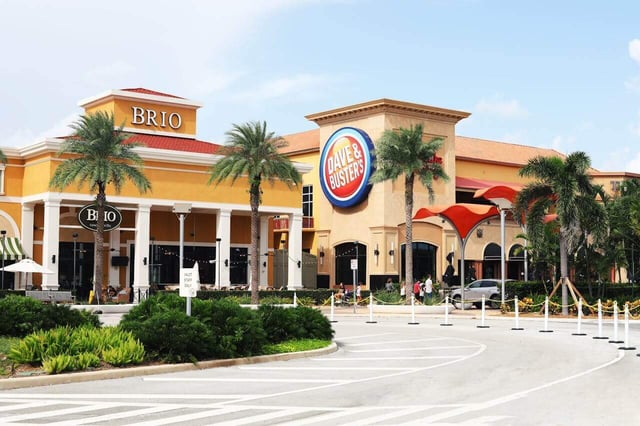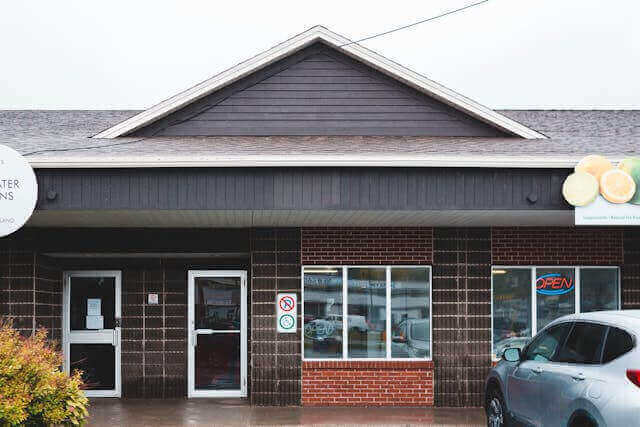When You Should Reconsider Utilizing 1031 Exchange Opportunities
March 24th, 2025
7 min read

A 1031 exchange can defer taxes. Still, in retail, it often creates pressure to buy quickly and accept a lower quality replacement just to meet tight deadlines. Because retail deals require deeper tenant and lease analysis, rushed timelines can increase the odds of overpaying or choosing a misfit asset. In many cases, investors are better served by prioritizing long-term strategy and deal quality, even if that means reconsidering whether a 1031 is worth it.
While 1031 exchanges might seem like a tax-saving goldmine for retail real estate investors, the reality is that strict deadlines and limited inventory often turn this "opportunity" into a costly game of investment roulette where rushed decisions trump strategic thinking.
If you’ve been researching real estate investing, you’ve probably heard about the 1031 exchange—a tax-deferral strategy that allows investors to sell an investment property, reinvest the proceeds into another property, and defer capital gains taxes indefinitely.
At first glance, this sounds like a dream strategy. Who wouldn’t want to roll profits forward without giving the IRS a cut? However, when it comes to retail real estate (think shopping centers, strip malls, and mixed-use developments), the 1031 exchange doesn’t always work as well as investors expect.
Strict time constraints, limited retail inventory, and the complexities of leasing and tenant relationships can turn what seems like a tax-saving tool into a high-stakes game of rushed decision-making. Imagine trying to find the perfect business partner in just six weeks—you’d likely settle for someone less than ideal. That’s the reality many retail investors face when using a 1031 exchange.
Before you assume a 1031 exchange is the best way to reinvest your capital, it’s important to understand why it often doesn’t work well for retail properties and what smarter alternatives you might want to consider instead.
The Benefits Of A 1031 Exchange
While this article highlights the challenges of using a 1031 exchange in retail real estate, it’s important to recognize that this tax strategy can be extremely beneficial in certain situations. For investors with a clear reinvestment plan and who can identify a quality replacement property within the required timeframe, a 1031 exchange can provide significant financial advantages.
Some of the key benefits of a 1031 exchange include:
- Tax Deferral – Investors can reinvest their sales proceeds into a new property instead of losing a portion to capital gains taxes.
- Portfolio Growth – By continuously rolling over gains, investors can scale up to larger and more valuable properties over time.
- Increased Cash Flow – Investors can use a 1031 exchange to upgrade into properties with stronger income potential or lower maintenance costs.
- Estate Planning Advantages – If an investor holds a property until death, heirs may receive a stepped-up cost basis, potentially eliminating deferred taxes.
That said, for many retail real estate investors (especially those new to the sector), the drawbacks of the 1031 exchange often outweigh the benefits. Before analyzing the potential disadvantages, let’s break down the moving parts of a 1031 exchange to understand how they operate.
How Does A 1031 Exchange Actually Work?
A 1031 exchange, named after Section 1031 of the Internal Revenue Code, allows real estate investors to defer capital gains taxes when selling an investment property, so long as they reinvest the proceeds into another income-generating property of similar nature, known as a “like-kind” exchange.
The Process Involved Strict Deadlines:
- Sell an investment property and place the proceeds in a Qualified Intermediary (QI), a neutral third party that holds the funds until a new property is purchased.
- Identify a replacement property within 45 days, submitting a written list of potential acquisitions.
- Close on one or more of the identified properties within 180 days of selling the original asset.
This strategy scales a real estate portfolio while avoiding immediate tax liabilities. However, retail real estate operates under unique conditions that often make this exchange more of a hindrance than a help.
What This Means For Beginner Investors
While these rules may seem reasonable, they can be extremely restrictive in the context of retail real estate. Retail investments often require careful market evaluation and tenant assessments, which can take months, if not years. The short timelines and lack of flexibility frequently force retail investors into hasty decisions that don’t align with their long-term strategy.
Why 1031 Exchanges Fall Short in Retail Real Estate
1. Strict Timelines Sometimes Lead To Rushed Investments
One of the biggest challenges of a 1031 exchange is the tight timeline. The 45-day identification window may seem like plenty of time, but in retail real estate, it’s barely enough to scratch the surface of due diligence.
Retail properties are not just about square footage and location. Investors must evaluate the following:
- Tenant quality – Are the existing tenants financially stable, or is there a risk of vacancies?
- Lease terms – Are the leases long-term and structured for rent increases, or are they about to expire without guarantees?
- Market trends – Is this area growing in population and foot traffic, or is it at risk of losing retail demand?
Finding the right retail property that checks all these boxes can take months, even years. But with a 1031 exchange, investors don’t have that luxury. Instead, they’re forced to make a purchase decision in a matter of weeks—often leading to compromised investment quality and potential long-term losses.
2. Rushed Deals Often Lead To Overpaying
Imagine needing to buy a new house in just a few days. You wouldn’t have time to compare properties, negotiate pricing, or ensure you’re making the best investment. Instead, you’d likely overpay or settle for a less-than-ideal property.
The same scenario occurs in retail real estate when investors scramble to find a replacement property within the 45-day deadline. Instead of strategically analyzing potential investments, they often purchase an overpriced or underperforming property simply to avoid the tax hit.
3. Retail Real Estate Is Highly Specialized, Limiting Flexibility
The IRS broadly defines "like-kind" properties, allowing investors to exchange nearly any income-producing real estate for another. However, this rule can be more restrictive than it seems, especially in retail real estate.
Retail assets come in many different forms, including:
- Grocery-anchored shopping centers
- Big-box retail spaces
- Neighborhood strip malls
- Mixed-use developments with residential components
Each type of retail investment comes with different tenant expectations, lease structures, and market dynamics. A large power center with national tenants like Target and Home Depot operates very differently from a neighborhood strip mall with local businesses. However, the 1031 exchange forces investors to reinvest in another income-generating property, often within the same asset class, even if market conditions suggest shifting strategies.
For example, suppose an investor owns a struggling shopping center and sees better opportunities in industrial warehouses (which are booming due to e-commerce growth). In that case, they can’t switch within a 1031 exchange. They’re effectively trapped in a retail-to-retail cycle, which may not align with where the real estate market is headed.
4. Great Deals Are Limited And Harder To Find
Unlike residential real estate, where new properties come on the market daily, retail real estate inventory is more constrained. Shopping centers and strip malls are long-term investments, and well-performing retail properties are often held by institutional investors or REITs that aren’t in a rush to sell.
This makes finding a high-quality retail asset in a short timeframe incredibly difficult. By the time a 1031 investor is scrambling to meet their 45-day deadline, they’re often left choosing between:
- Overpaying for an available retail property rather than waiting for the right deal
- Settling for a lower-quality asset in a weaker location
- Failing to complete the exchange and triggering the capital gains tax anyway
It’s like going to the grocery store when you’re starving. You’ll buy whatever is available, even if it’s overpriced or not what you need. The same problem happens with retail investors who rush to meet a 1031 deadline.
5. Debt And Equity Restraints Can Lead To Unwanted Leverage
A lesser-known challenge of the 1031 exchange is that investors must reinvest all proceeds and take on equal or greater debt in the new property. If an investor sells a shopping center for $5 million with only $1 million in debt, their replacement property must be worth at least $5 million and take on at least $1 million in new debt.
For retail investors, this can be a serious problem. Some may want to deleverage their portfolio and take on less debt, but the 1031 rules force them to maintain or increase leverage. In a rising interest rate environment, this can create added financial risk, potentially turning what should be a smart investment move into a debt trap.
Smarter Alternatives To The 1031 Exchange
Instead of locking yourself into a stressful and rushed 1031 exchange, consider these alternative tax strategies:
- Opportunity Zone Investments - Investing in designated Opportunity Zones allows investors to defer and even eliminate capital gains taxes over time while investing in up-and-coming markets.
- Cost Segregation & Accelerated Depreciation - Instead of deferring capital gains taxes through a 1031 exchange, investors can use depreciation strategies to reduce taxable income—allowing them to reinvest profits without the restrictions of a forced timeline.
- Delaware Statutory Trusts (DSTs) - DSTs allow investors to own fractional shares of institutional-quality properties, providing a hands-off investment with continued tax deferral benefits.
- REITs and Diversified Funds - Instead of buying another retail property outright, investors can sell their assets and reinvest in real estate investment trusts (REITs)—gaining exposure to a diversified portfolio of retail properties without the risks of direct ownership.
Why This Matters For Investors
Consider this scenario: Imagine you've just sold a property and now have only 45 days to choose a new one. You might find yourself in a rush, trying to secure a deal before time runs out. In retail real estate, where market research, tenant analysis, and lease structures can take months to assess, this hurried decision-making can lead to mistakes.
Ultimately, the purpose of investing in retail real estate is to defer taxes and build long-term wealth. By selecting strategies that align with current market conditions and personal investment goals, investors can maximize their returns without the pressure of arbitrary deadlines.
Invest Strategically, Not Just To Avoid Taxes
A 1031 exchange is a valuable tool for delaying taxes, but it may not be the best fit for everyone, especially retail real estate investors. The strict deadlines, limited options, and lack of flexibility can push investors into quick decisions. These rushed choices can lead to overpaying for properties, buying poor investments, or taking on extra debt.
When used wisely, 1031 exchanges can be helpful. Investors with a solid plan and access to good retail properties can benefit from this method to grow their portfolios without facing immediate taxes.
However, many retail investors feel pressured to reinvest quickly, which can lead to costly mistakes. Instead of hurrying to meet a deadline, exploring other tax strategies like Opportunity Zone investments, cost segregation, or REITs is often better. These alternatives offer more flexibility and reduce the risks of forced transactions.
The best investment decision aligns with your financial goals, market conditions, and long-term strategy—not just the one that avoids taxes in the short term. The easiest way to determine the best investment decisions is to continue your real estate education with informative articles, expert insights, and proven methods. A great resource for your real estate education is the RockStep Capital Learning Center, where you can find answers to any of your retail real estate questions.
Topics:


























